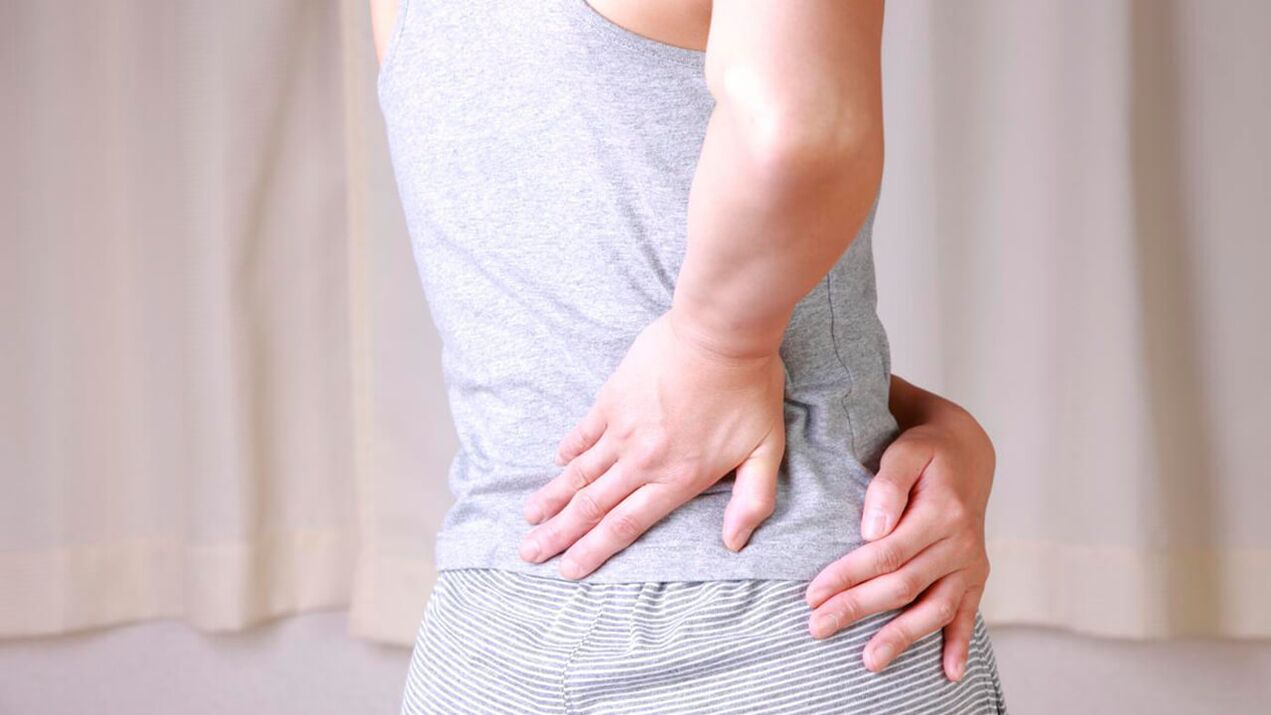
One of the common symptoms with which patients come to a medical facility is pain in the hip joint. The causes, treatment and possible diseases that cause such a manifestation cannot be identified without qualified medical care. Musculoskeletal SystemDiscomfort in any part of the hip may indicate the development of serious pathology, so hip joint dysfunction should not be ignored.
Anatomy of the hip joint area
The hip joint plays an important role in motor activity. It is one of the largest human joints, which can withstand heavy loads while standing as well as walking straight.
bones that form joints
The hip joint is formed by the head of the femur and the acetabulum of the innominate pelvic bone – the most powerful and largest part of the human skeleton. The minimum number of structural elements of the joint is important for its strength and reliability, ability to withstand body weight during movementMost deformities of the hip joint begin with damage to the acetabulum, the stable part of the joint. Its shape resembles a bowl, with its center directed upward at a slight angle, which distributes the weight between the pelvic bones. Ensures equal distribution of
The glenoid cavity is a strong and solid structure, which contains 3 types of pelvic bones:
- ileal
- asthenic
- pubic
The weakest area of the articular cavity occurs in children whose bone tissue is not strong enough. Due to the presence of a small bone ridge on the edge of the socket, the head of the femur is completely immersed in the "bowl". , which provides strong support to the limb. The mobile part of the joint is the femur (head, neck, greater and lesser trochanter). The shape of the head matches the articular cavity. It is covered with cartilage tissue, which serves as the correct joint element. Ensures alignment and their smooth sliding. In the center of the head there is a strong ligament that connects the bone to the acetabulum, which provides additional grip and support.
The neck departs from the head of the femur at an obtuse angle, which ensures joint mobility and equal distribution of load between the limbs. Trochanters are bony projections to which muscular tendons are attached.
Fabrics and Structures
The normal functioning of the joint is ensured by various structures, each of which performs a corresponding function.
Decrease in blood supply, performance and sensitivity of the joint is provided by:
- Ligaments and tendons surround the joint on all sides, covering and protecting the femur and its neck as well as the socket.
- Cartilage covers the head of the femur and part of the acetabulum.
- Subcartilaginous areas are bone tissue consisting of cells and connective extracellular material.
- The membrane or capsule of the joint is the source of a special secretion – synovial fluid to lubricate the joint parts.
- The acetabular labrum connects the side of the acetabulum and the transverse ligament.
The hip joint is supplied with nutrients through a distinct network of vessels and arteries. The blood supply to the internal parts of the joint is provided by the acetabular branch of the obturator artery, and to the capsule, ligaments and surrounding muscles. It is supplied through the deep arteries of the thigh and buttocks.
Anatomical structures located next to the hip joint
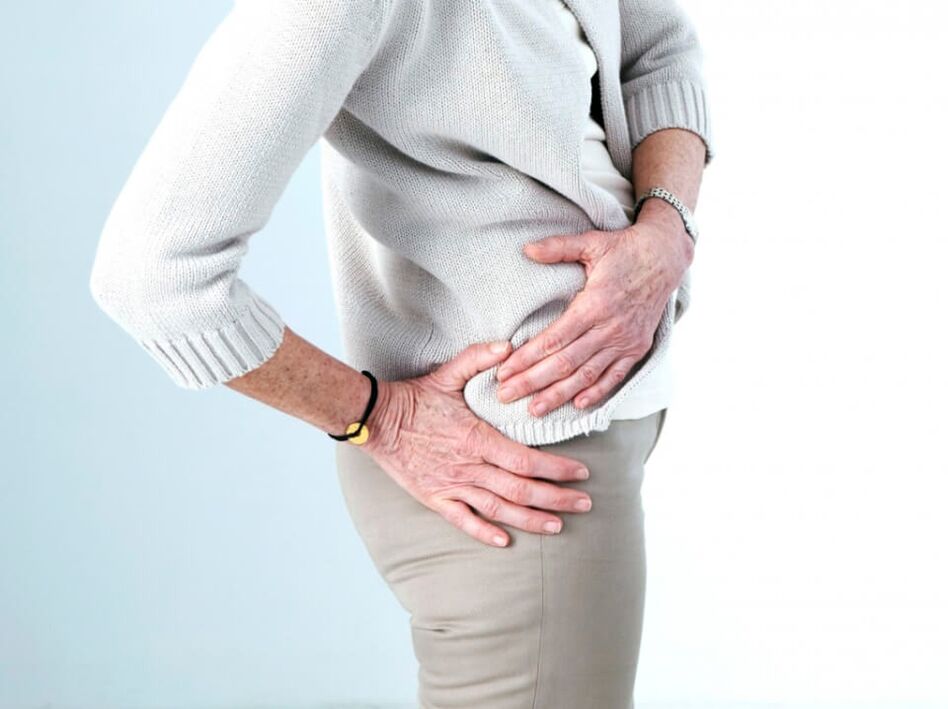
Often the cause of pain in the hip joint is damage to the anatomical structures located next to it. These elements include:
- Skin and subcutaneous tissue – the outer covering of the body
- The muscles of the thighs, pelvis, lower back and buttocks provide mobility to the joint and additionally strengthen it from the outside
- Extra-articular ligaments – located around the joint capsule perform a reinforcing function
- Periarticular bursae are bundles of connective tissue that prevent friction between soft and hard tissues.
risk
Inflammatory processes in the pelvic area are caused by mechanical damage or damage to certain types of bacteria. In this case, both the elements of the joint and the anatomical structures around them can be exposed to pathological influences.
As a rule, one or more structures become swollen:
- leather
- Muscles
- Ligaments (extra-articular, femoral head)
- periarticular bursa
- tbs capsules
- cartilage
- acetabular labrum
- subcartilaginous area
Pain in the hip joint is often caused by harmful microorganisms that provoke the development of infectious arthritis. Other causes are also common:
- immune system disorders
- Joint injuries due to excessive physical activity
- old age
- metabolic disorders
- other diseases
Pain characteristics
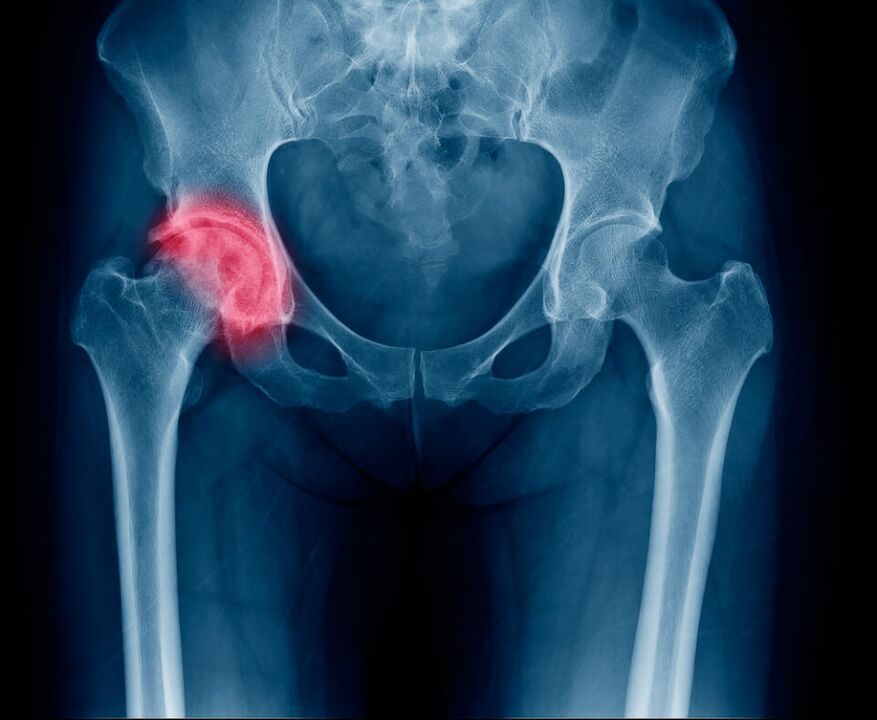
When diagnosing hip pain, additional symptoms play an important role, which may indicate the root cause of the problem.
Pain occurs in the hip joint and spreads to the leg
If pain from the sore joint spreads to the groin, knees, or buttocks, the problem is most likely caused by nerve damage in the leg area due to one of the following causes:
- joint tumor
- Infectious arthritis – caused by damage by a pathogen
- Fracture of the femur (in the head or neck area)
- Legg-Calve-Perthes pathology – necrosis of the cartilage tissue of the femoral head
- Juvenile epiphysiolysis – disruption of the structure of the joint head and its inflammation
Pain in the hip joint, which radiates to the leg, may indicate pathology of cartilage tissue and periarticular structures, lack of joint lubrication and damage to the synovial membrane. Painful symptoms can occur suddenly or increase gradually.
pain when walking
Pain in the hip joint during walking can occur if the acetabulum comes into contact with the cartilaginous tissue of the head of the femur, resulting in an inflammatory process. The cause of this phenomenon can be mechanical damage, inflammation of the anatomical structures located next to the joint. Is.
Depending on the intensity of pain in the hip joint while walking, you can identify the root cause of the problem:
- Discomfort at the beginning of walking, gradually decreasing - a sign of inflammation of the periarticular bursa.
- Discomfort that gradually increases from the moment you start walking – inflammation of the articular surfaces of the hip joint
- Persistent pain of high intensity, accompanied by impaired joint function - occurs with dislocations and fractures.
- Pain occurs closer to night - the result of degeneration of the cartilage of the femoral head and (or) acetabulum, which rub against each other and become inflamed.
- Pain of moderate intensity is a sign of minor injuries and bruises
pain when abducting the leg
Pain when abducting the foot is caused by inflammation of the tissues and structures that provide movement: muscles, periarticular bursa, tendons. Similar symptoms often occur with myositis (inflammation of muscle tissue), bursitis (inflammation of the periarticular bursa), andCaused by tendinitis (inflammation of the tendons).
Reason
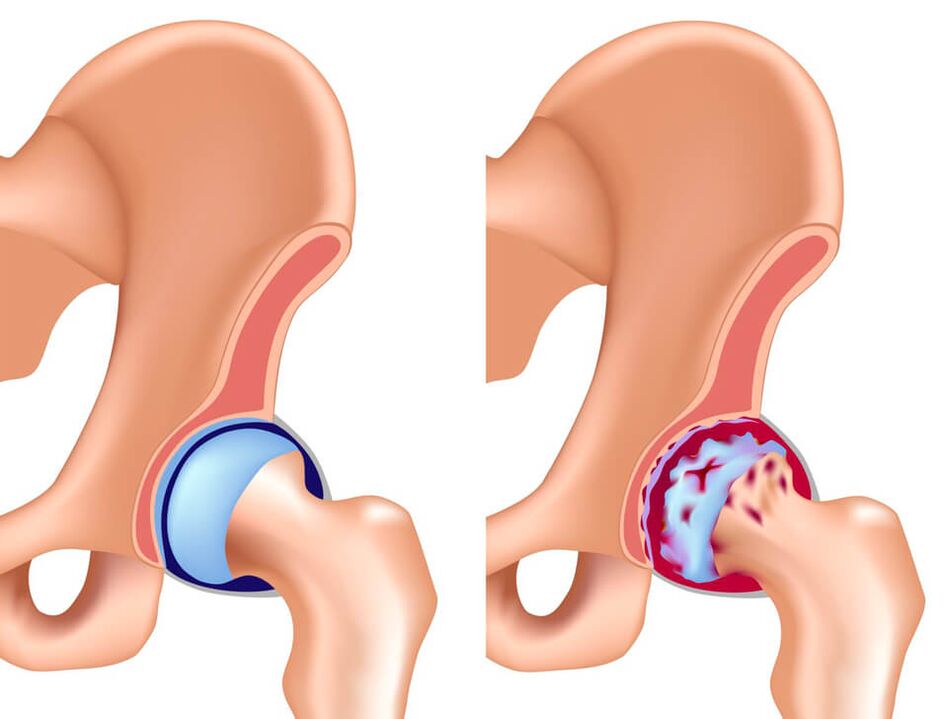
In most cases, pain in the pelvic area is caused by one of the following problems the patient suffers from:
- Arthritis
- coxarthrosis
- Bursitis of trochanteric bursa
- tendinitis
- infectious disease
- inherited diseases
- Tumor formation in pelvic area
Without timely treatment, each of these causes can lead to serious complications, including loss of joint mobility.
Arthritis
Arthritis (coxitis) is a disease of the joint tissues caused by disorders of the immune system or damage caused by pathogens: viruses and bacteria.
Symptoms of Arthritis:
- rise in temperature
- Pain and swelling in the joint area
- motor loss
This disease occurs in acute, subacute and chronic forms.
coxarthrosis
Another name for coxarthrosis is osteoarthritis of the hip joint. This pathology is caused by metabolic disorders in cartilaginous tissues, resulting in their death. The cause of this phenomenon is injury, impaired blood supply, excessive physical activity, from 45 yearsOlder age and heredity may be the cause. The main symptom of coxarthrosis is pain in the lower back, waist and buttocks, which gradually increases during physical activity and causes lameness. The discomfort subsides during periods of inactivity. Is.
Bursitis of trochanteric bursa
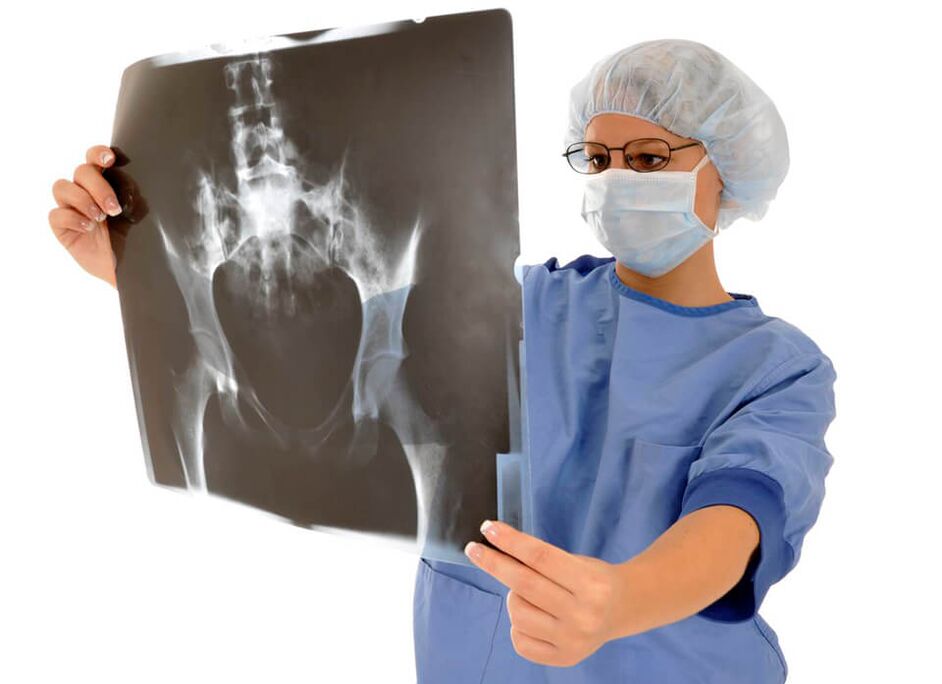
The presence of an inflammatory process in the bursa (trochanteric bursa) is characterized by the occurrence of intense pain in the joint area. Athletes and elderly people are susceptible to this disease. The main symptom of bursitis of the trochanteric bursa is pain in the area of the greater trochanter, whichWorsens when trying to lean on the affected leg.
tendinitis
Inflammation of the tendons is called tendinitis. It is a disease that occurs in acute or chronic form and brings about degenerative changes in the tissues. Often this pathology occurs in athletes who do not follow their running technique, withEven after heavy load on the hip muscles.
Usually, tendinitis is a complication of another disease:
- Thyroid pathology
- metabolic disorders
- Arthritis
- articulation
- Inflammatory process of systemic or infectious origin
- hip dysplasia
Due to tendonitis, the patient experiences discomfort in movement, pain, change in gait and clicking sensation while walking in the joint area.
infections
Some infectious diseases cause inflammation of the joint tissues, as well as nearby anatomical structures, resulting in intense pain in the hip joint. Most often, the following pathologies have similar symptoms:
- Aseptic necrosis of the femoral head is a disruption of the blood supply to the groin area, resulting in tissue death. The pain associated with this disease is intense and intense. This problem is more common in men.
- Purulent arthritis is a serious disease that requires immediate treatment. If you do not immediately seek medical help, sepsis may occur. Associated symptoms are general intoxication, pain and swelling in the area of the affected joint, difficulty in motor activity.
- Tuberculous arthritis is common in children and has a slow progression. Associated symptoms are increased fatigue, decreased motor activity, and muscle atrophy. Pain of varying intensity increases when a purulent abscess occurs.
Infectious pathologies of the hip joint lead to serious complications and therefore require immediate treatment.
hereditary disease
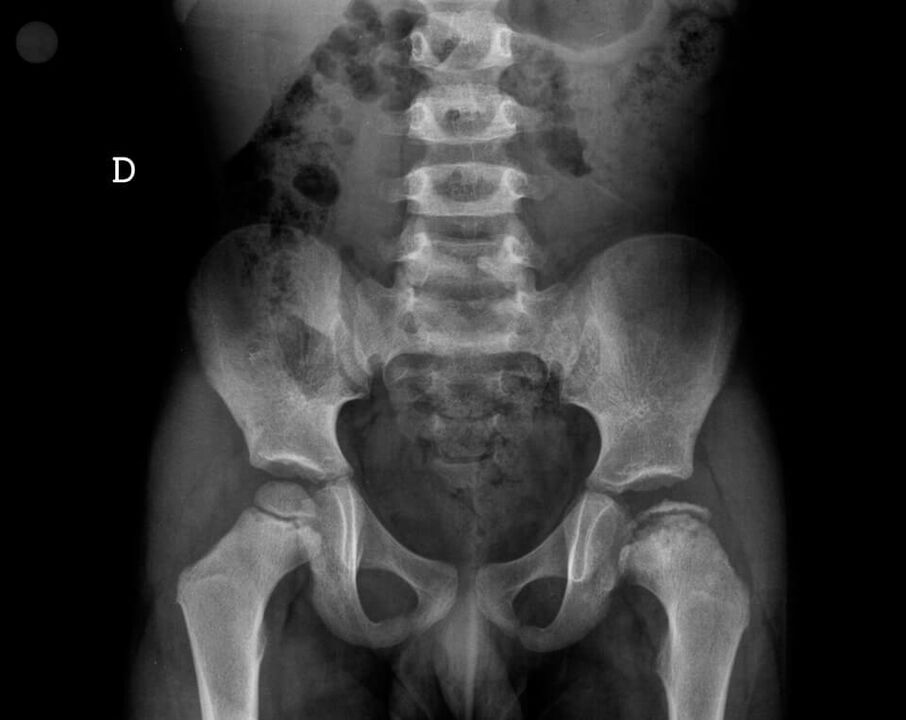
Hereditary deformities of the hip joint usually appear between the ages of 1 and 10, and are characterized by pathological changes in the tissues of the glenoid cavity and/or the head of the femur. The most common hereditary deformities affecting the hip joint areThe disease is Legg–Calvé–Perthes syndrome, which is characterized by pain and gait disturbance due to the death of the cartilage tissue of the joint.
Bone and soft tissue tumors
Benign or malignant growths of bone and soft tissues in the hip joint can cause pain when walking or at rest. Tumors can occur in bone tissues (osteomyelitis), cartilaginous tissues (chondroblastoma, chondroma), osteochondral tissues (osteochondroma. As a rule, the neoplasm causes discomfort and is felt when touched. Benign tumors are treated surgically; Some of them may turn into cancerous tumors.
Soft tissue tumors of the thigh:
- lipoma
- rhabdomyoma
- fibroma
- hemangioma
- neuroma
An oncologist is involved in the diagnosis and treatment of tumors in the hips and pelvis.
What to do
With severe deformity of the hip joint, a person feels severe pain. Discomfort in the pelvic area is a reason to visit a medical facility for examination and treatment.
Special attention should be paid to the intensity of pain:
- lungs- Bruising after an injury. Cold should be applied to the painful area to reduce swelling. To reduce pain, it is recommended to take non-steroidal anti-inflammatory drugs. It is advisable to consult a doctor.
- medium- Usually occurs in diseases of the hip joint, accompanied by difficulty in motor activity and increased body temperature. Discomfort increases during physical activity. It is necessary to consult a rheumatologist.
- strong- Arise due to dislocations and fractures. Accompanied by limitation or impossibility of physical activity. In cases of severe pain in the hip joint due to injury, you should contact an ambulance.
There are many folk remedies that are used for pain in the hip joint. It is important to remember that all of them are suitable for symptomatic treatment and reducing pain, but will not help eliminate the cause of the problem. EffectiveTreatment is carried out exclusively under the supervision of a qualified physician.
Which doctor should I contact?
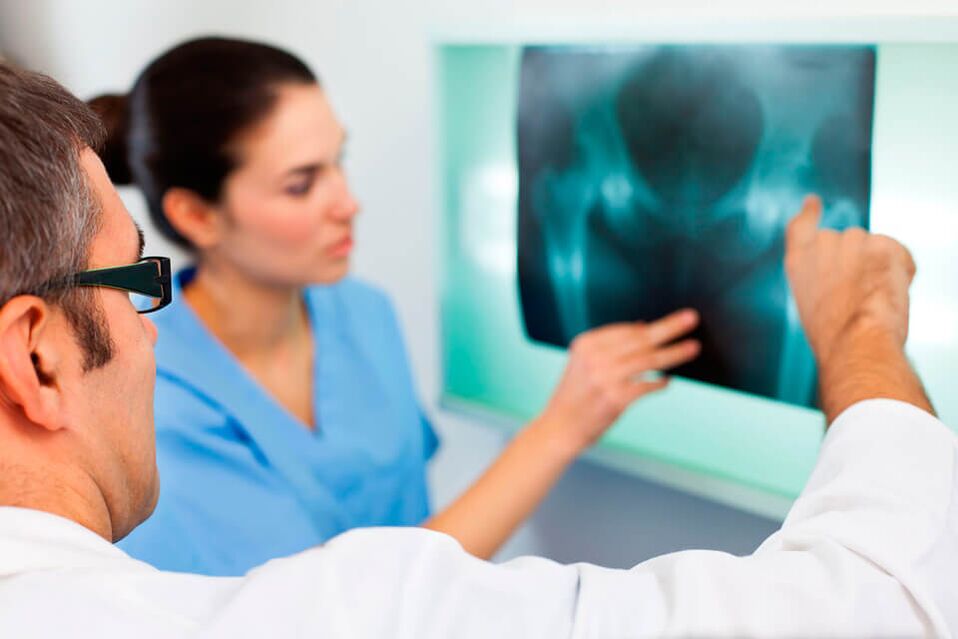
If you have pain in your hip joint, you should contact your family doctor or general practitioner, who will refer you to a specialist. Diseases of the musculoskeletal system are dealt with:
- traumatologist- Pain in the hip joint due to physical activity, sprains, falls and other injuries
- rheumatologist- Sudden onset of joint pain without any apparent reason
You may also need to consult other doctors: a surgeon, oncologist, infectious disease specialist, etc.
diagnosis
The first important stage in diagnosing pain in the hip joint is an external examination, which necessarily includes taking anamnesis and palpation. Depending on the severity of the disease and the patient's complaints, laboratory tests and instrumental diagnostic methods are prescribed:
- radiograph- Use of X-rays to examine a specific area of the body
- CT and MRI- Modern accurate diagnostic methods that allow you to obtain highly informative images of the joint and the area around it
- Microbiological examination of samples of biological materialAllow to detect the presence of pathogenic microorganisms: viruses and bacteria
- immunological blood test- allows you to identify immune disorders, determine the presence of certain autoantibodies
- Arthroscopy (endoscopic examination)- Examination using probes, the possibility of taking a sample of joint tissue for further research
- laboratory test of flow- sampling intra-articular fluid during puncture and identifying the causative agent of infectious disease in it, checking sterility
The use of several diagnostic methods in combination allows us to identify the cause of pain in the hip joint with high accuracy.
Treatment
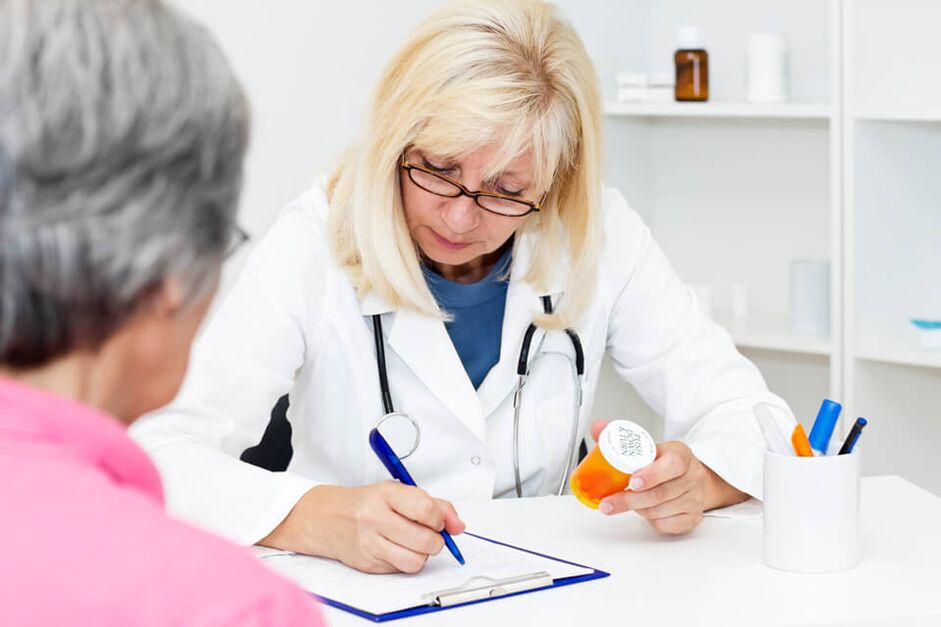
Treatment of pain in the hip joint should be determined by the doctor on the basis of examination and diagnosis. As a rule, drug therapy or surgery is prescribed.
Medicine
Treatment of pain in the hip joint should be comprehensive, aimed at eliminating the symptoms and, most importantly, eliminating the cause of the problem. For this purpose, drug therapy is used, which includes the use of:
- nonsteroidal anti-inflammatory drugs- Help reduce pain, relieve swelling
- Means to improve micro circulation- Help restore blood circulation and nutrition of joint tissues
- Chondroprotectors- Promotes restoration of cartilage tissue
- muscle relaxants- Reduce pain, improve blood flow to the damaged area
- hormonal drugs- To relieve pain and suppress inflammation
In the treatment of pain in the hip joint, physical procedures are highly effective: massage, acupuncture, cryo- and laser therapy. Special therapeutic exercises and manual therapy are also used.
Surgery
Surgical intervention is indicated in advanced cases when conservative treatment does not help the patient. It involves partial or complete replacement of the diseased joint with a prosthesis.
prevention
Reducing the load on the legs will slow down the pathological processes inside the joint, so obese people are advised to start losing weight.
Preventive measures will help reduce pain in the hip joint:
- regular walking
- physical treatment
- Balanced diet rich in Vitamin A, C, E
Timely consultation of a doctor at the first stage of the disease increases the effectiveness of treatment and also reduces the risk of complications and serious consequences for the body.



















































